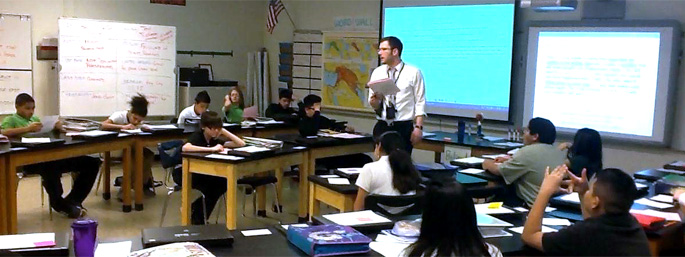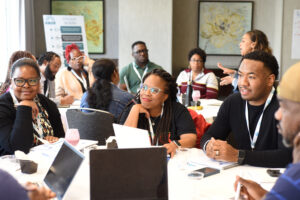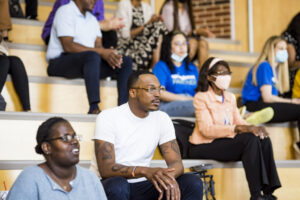A few months ago, some of the first-year teachers I help train here in Indiana as part of our Teaching Fellows programs were starting to get into a groove: their classrooms were humming, their lessons were starting to jell and their students were showing consistent, strong evidence of learning.
These folks were getting confident, which was great, but also getting too comfortable, which wasn’t. During coaching sessions after one of my regular classroom visits, I’d remind them about proven techniques like using a strong voice and hear, “Oh, yeah, I’ve got that, no biggie.” But when I stepped into their classrooms the next day, they still weren’t executing the techniques well enough—their voice would be loud and firm, but they wouldn’t stand tall to deliver the message.
Their performances were good, but I knew they could be great. It was time for the Hot Seat.
The Hot Seat Challenge
With the help of their principals, I arranged for groups of kids who did not have the Fellows as teachers to gather in a classroom after school. Then, I gave each Fellow no more than an hour’s notice that they would teach something from their daily lesson plan that afternoon—in front of their principal, to kids they didn’t know.
Honestly, I anticipated total train wrecks: kids all over the place, a frazzled teacher, and no learning going on whatsoever. But my fears didn’t come true. Most of them showed genuine excitement and made the most of the challenge, which forced them to hit the techniques that they weren’t focused on with their regular classes.
For example, a science teacher I was coaching had a lot of strengths, but was wasting too much time during class. Quick “Do Now” activities were taking 6-7 minutes instead of 3-5 minutes, and transitions like passing out paper or opening up books were taking 90 seconds each instead of just a few.
It may sound like splitting hairs, but kids in science class are looking for any excuse to tune out, so it’s really important to keep up the pace. So I gave him this Hot Seat Challenge: tighten up transitions and give his class some urgency.
He had a one-hour heads up, which he spent revisiting his lesson plans for the day and layering in narration for transitions to ensure they were quick. Because the students were not his own, he needed to explicitly state his expectations and challenge students to make transitions really quick.
It paid off: in the hot seat, he taught a full, 50-minute lesson, guiding students through six transitions that took a combined two minutes total. And for the rest of the school year, his students were transitioning from guided practice to lab activities in 6 seconds, and from one lab activity to another in 5 seconds.
As much fun as this coaching technique is, it’s not for everyone. It wouldn’t be a good forum for teachers trying to attempt something new, and I would not put a brand-new teacher on the Hot Seat. Instead, I’d use one-on-one coaching based on my observation of their class or guide them during class using earbud coaching.
The challenge is really for teachers who are good, but could be great—those who need to practice and fine-tune skills they already have but are choosing not to use. All 10 Fellows who participated improved dramatically on their next performance evaluation, moving up an entire level on the target skill, out of a five-point rating system. The five Fellows who did a second challenge moved two levels up—the difference between performance considered “developing” and “skillful.”
The Hot Seat was the push they needed. I framed the coaching session as “Hey, show me what you’ve really got.” And they did.








